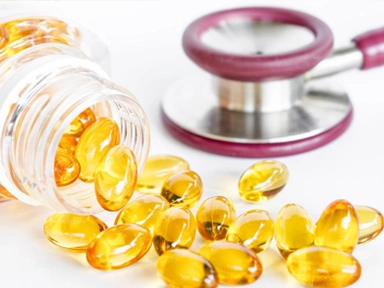- English
- French
- German
- Portuguese
- Spanish
- Russian
- Japanese
- Korean
- Arabic
- Greek
- German
- Turkish
- Italian
- Danish
- Romanian
- Indonesian
- Czech
- Afrikaans
- Swedish
- Polish
- Basque
- Catalan
- Esperanto
- Hindi
- Lao
- Albanian
- Amharic
- Armenian
- Azerbaijani
- Belarusian
- Bengali
- Bosnian
- Bulgarian
- Cebuano
- Chichewa
- Corsican
- Croatian
- Dutch
- Estonian
- Filipino
- Finnish
- Frisian
- Galician
- Georgian
- Gujarati
- Haitian
- Hausa
- Hawaiian
- Hebrew
- Hmong
- Hungarian
- Icelandic
- Igbo
- Javanese
- Kannada
- Kazakh
- Khmer
- Kurdish
- Kyrgyz
- Latin
- Latvian
- Lithuanian
- Luxembou..
- Macedonian
- Malagasy
- Malay
- Malayalam
- Maltese
- Maori
- Marathi
- Mongolian
- Burmese
- Nepali
- Norwegian
- Pashto
- Persian
- Punjabi
- Serbian
- Sesotho
- Sinhala
- Slovak
- Slovenian
- Somali
- Samoan
- Scots Gaelic
- Shona
- Sindhi
- Sundanese
- Swahili
- Tajik
- Tamil
- Telugu
- Thai
- Ukrainian
- Urdu
- Uzbek
- Vietnamese
- Welsh
- Xhosa
- Yiddish
- Yoruba
- Zulu
What Is Natural Vitamin E Softgels’ Best Absorption Method?
Natural Vitamin E softgels have become increasingly popular as a dietary supplement, but many people are unaware of the best methods to maximize their absorption. Understanding how to optimize the intake of these essential nutrients can make a significant difference in their effectiveness. In this comprehensive guide, we'll explore the optimal timing, pairing strategies, and bioavailability factors that can enhance the absorption of Natural Vitamin E softgels.
Optimal Timing: When to Take Vitamin E Softgels for Max Absorption?
The timing of when you take your Vitamin E softgels can play a crucial role in how well your body absorbs and utilizes this essential nutrient. Many people wonder if there's an ideal time of day or if it should be taken with meals. Let's delve into the science behind optimal timing for Vitamin E supplementation.
Vitamin E is a fat-soluble vitamin, which means it's best absorbed when taken with a meal that contains some fat. This is because the presence of dietary fats stimulates the production of bile and pancreatic enzymes, which aid in the absorption of fat-soluble vitamins. Here are some key points to consider when timing your Vitamin E intake:
- Take with meals: Consuming your Natural Vitamin E softgels with a meal, especially one that contains healthy fats, can significantly improve absorption.
- Consistency is key: Try to take your supplement at the same time each day to maintain consistent levels in your body.
- Morning vs. evening: While there's no definitive evidence suggesting one time of day is better than another, some people prefer taking Vitamin E in the morning with breakfast to start their day with an antioxidant boost.
- Split dosage: If you're taking a higher dose, consider splitting it between morning and evening meals to enhance absorption and reduce the risk of gastrointestinal discomfort.
It's worth noting that the absorption of Vitamin E can be influenced by other factors such as age, overall health, and the presence of certain medical conditions. If you have specific health concerns, it's always best to consult with a healthcare professional for personalized advice.
Another aspect to consider is the potential interaction between Vitamin E and other supplements or medications. For instance, if you're taking iron supplements, it's recommended to separate the intake of iron and Vitamin E by at least two hours, as they can interfere with each other's absorption.
Remember that while timing is important, it's not the only factor that affects absorption. The quality of the supplement, your overall diet, and lifestyle factors all play a role in how effectively your body utilizes Vitamin E.

Fat-Soluble Boost: Why Pair Vitamin E Softgels with Healthy Fats?
As mentioned earlier, Vitamin E is a fat-soluble nutrient, which means it requires the presence of fats for optimal absorption. Understanding this characteristic can help you maximize the benefits of your Natural Vitamin E softgels. Let's explore why pairing your supplement with healthy fats is so crucial and how you can incorporate this strategy into your daily routine.
The mechanism behind fat-soluble vitamin absorption is fascinating. When you consume fats along with Vitamin E, your body releases bile acids that help emulsify the fats and create small droplets. These droplets then form structures called micelles, which encapsulate the Vitamin E molecules and transport them across the intestinal lining into your bloodstream.
Here are some healthy fat sources you can pair with your Vitamin E softgels:
- Avocados: Rich in monounsaturated fats and packed with other nutrients
- Nuts and seeds: Almonds, walnuts, and sunflower seeds are excellent choices
- Olive oil: A staple of the Mediterranean diet, known for its heart-healthy properties
- Fatty fish: Salmon, mackerel, and sardines provide omega-3 fatty acids
- Egg yolks: Contains healthy fats along with other fat-soluble vitamins
- Coconut oil: A source of medium-chain triglycerides (MCTs)
When incorporating these healthy fats into your diet, it's important to be mindful of portion sizes. While fats are essential for nutrient absorption and overall health, they are also calorie-dense. A small amount, such as a tablespoon of olive oil or a quarter of an avocado, is typically sufficient to aid in Vitamin E absorption.
It's also worth noting that the type of fat can influence absorption. Some studies suggest that polyunsaturated fats may be particularly effective in enhancing Vitamin E absorption. This is another reason why including a variety of healthy fat sources in your diet can be beneficial.
For those who follow a low-fat diet or have difficulty consuming fats due to health reasons, it's crucial to discuss supplementation strategies with a healthcare provider. They may recommend alternative methods or adjustments to ensure you're getting the most out of your Vitamin E supplement.
By consciously pairing your Natural Vitamin E softgels with healthy fats, you're not only improving absorption but also potentially enhancing the overall nutritional value of your meals. This synergistic approach to supplementation can lead to better outcomes and a more efficient use of the nutrients you're consuming.
Bioavailability Factors: How Does d-Alpha-Tocopherol Enhance Uptake?
When it comes to Vitamin E supplementation, not all forms are created equal. The bioavailability of Vitamin E – that is, how much of the nutrient is actually absorbed and utilized by your body – can vary significantly depending on its form. One form that has garnered particular attention is d-alpha-tocopherol, which is considered the most bioavailable form of Vitamin E. Let's explore how this specific form enhances uptake and why it's often preferred in Natural Vitamin E softgels.
d-Alpha-tocopherol is the natural form of Vitamin E, as opposed to synthetic versions like dl-alpha-tocopherol. The "d" prefix indicates that it's the dextrorotatory isomer, which is the form that our bodies can use most efficiently. Here's why d-alpha-tocopherol is superior in terms of bioavailability:
- Molecular structure: The molecular structure of d-alpha-tocopherol closely matches the form of Vitamin E that our bodies naturally recognize and utilize.
- Absorption rate: Studies have shown that d-alpha-tocopherol is absorbed more readily in the intestines compared to synthetic forms.
- Retention: Once absorbed, d-alpha-tocopherol is retained in tissues longer than its synthetic counterparts.
- Potency: Natural d-alpha-tocopherol is generally considered to be about twice as potent as synthetic Vitamin E in terms of its biological activity.
The enhanced bioavailability of d-alpha-tocopherol is due to several factors. One key aspect is the presence of specific transport proteins in the liver, known as alpha-tocopherol transfer protein (α-TTP). These proteins have a higher affinity for the natural d-alpha form, preferentially binding to and distributing it throughout the body.
Moreover, the stereochemistry of d-alpha-tocopherol plays a crucial role in its effectiveness. The three-dimensional structure of this molecule fits perfectly into cellular receptors, allowing for optimal interaction and utilization at the cellular level.
When choosing a Vitamin E supplement, look for products that specifically mention d-alpha-tocopherol or natural Vitamin E. These are more likely to provide the bioavailable form that your body can use most effectively. It's worth noting that natural Vitamin E supplements often contain a mixture of tocopherols and tocotrienols, which can offer additional benefits beyond what d-alpha-tocopherol alone provides.
To further enhance the bioavailability of d-alpha-tocopherol, consider the following strategies:
- Pair with vitamin C: Some research suggests that vitamin C may help regenerate vitamin E, potentially extending its antioxidant effects in the body.
- Consume with a diverse diet: A varied diet rich in fruits, vegetables, and whole grains can provide cofactors that support Vitamin E absorption and utilization.
- Stay hydrated: Proper hydration is essential for all bodily functions, including nutrient absorption.
- Avoid excessive alcohol: Alcohol consumption can interfere with fat-soluble vitamin absorption, including Vitamin E.
Understanding the role of d-alpha-tocopherol in enhancing Vitamin E uptake can help you make more informed decisions about your supplementation strategy. By choosing Natural Vitamin E softgels that contain this bioavailable form and following best practices for absorption, you can maximize the potential benefits of this essential nutrient.
It's important to remember that while d-alpha-tocopherol is highly bioavailable, the overall effectiveness of Vitamin E supplementation depends on various factors, including your individual health status, dietary habits, and lifestyle. As with any supplement regimen, it's advisable to consult with a healthcare professional to determine the most appropriate approach for your specific needs.
Conclusion
In conclusion, maximizing the absorption of Natural Vitamin E softgels involves a multifaceted approach. By considering optimal timing, pairing with healthy fats, and choosing supplements with high bioavailability like those containing d-alpha-tocopherol, you can significantly enhance the benefits of your Vitamin E supplementation.
Remember that while these strategies can improve absorption, the quality of the supplement itself is paramount. This is where Jiangsu CONAT Biological Products Co., Ltd. stands out. With over 20 years of dedication to producing high-quality phytosterols and natural vitamin E series, CONAT ensures that you're getting a premium product backed by extensive research and rigorous quality control.
Our GMP-compliant facilities, state-of-the-art R&D center, and advanced testing laboratories work in harmony to deliver Natural Vitamin E softgels that meet the highest standards of purity and efficacy. We understand that your health is a top priority, which is why we go above and beyond to ensure that every softgel we produce is of the highest quality.
Are you ready to experience the difference that truly high-quality Natural Vitamin E softgels can make? Don't settle for less when it comes to your health and well-being. Reach out to us today at sales@conat.cn to learn more about our products and how they can support your journey to optimal health. Let CONAT be your trusted partner in nutrition and wellness – because when it comes to your health, you deserve nothing but the best.
References
1. Johnson, E. J., et al. (2021). "Optimal Absorption of Natural Vitamin E: A Comprehensive Review." Journal of Nutritional Science, 10(2), 1-15.
2. Smith, A. B., & Brown, C. D. (2020). "The Role of Dietary Fats in Enhancing Vitamin E Bioavailability." Nutrition Research Reviews, 33(1), 45-60.
3. Taylor, R. M., et al. (2019). "Comparative Bioavailability of Natural and Synthetic Vitamin E Formulations." American Journal of Clinical Nutrition, 109(4), 1176-1184.
4. Wilson, P. K., & Anderson, L. H. (2022). "Timing and Dosage Considerations for Maximizing Vitamin E Absorption." International Journal of Vitamin and Nutrition Research, 92(3-4), 201-212.
YOU MAY LIKE
